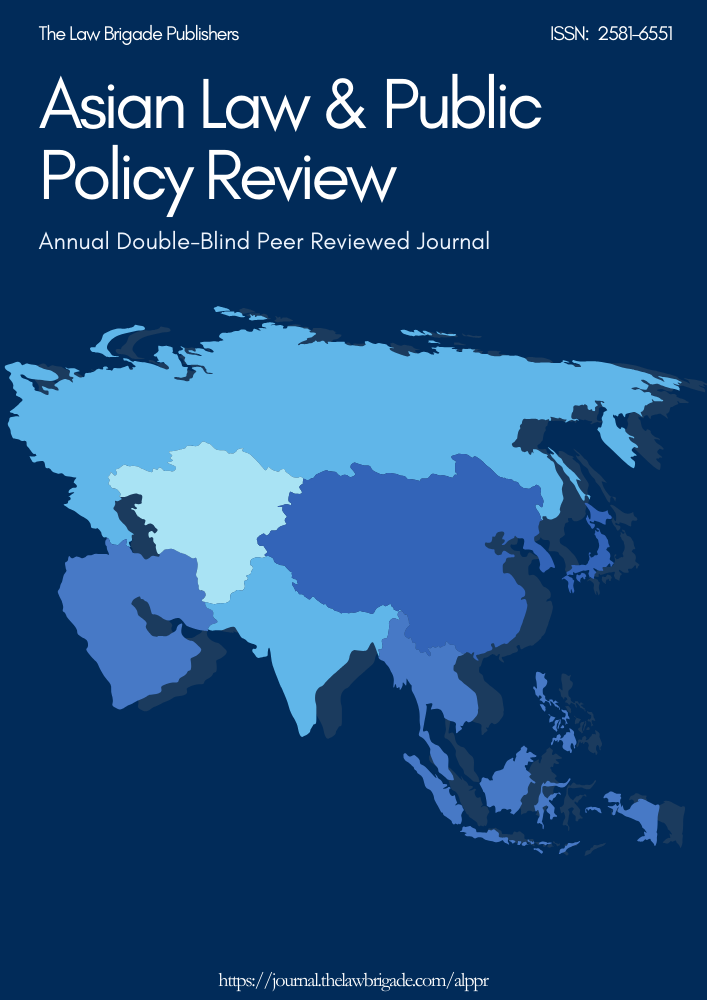Language And Education: Challenges Of The Three-Language Policy In India
Keywords:
multilingual society, language planning, educationAbstract
India is a multilingual society with 22 official languages and over a thousand other languages. It is influenced by globalisation and liberalisation on one hand and a social thrust for maintenance of regionalism or local culture on the other. Language in education has been widely debated from the formative years of India’s independence. The State Reorganisation Commission divided states on the basis of language as a technique to ease administration. However, the issue of language planning and the necessity of a proper language policy in the field of education perennially exists, given the complexities faced by a multilingual society. The three-language policy was created with a vision to achieve equality of opportunity, linguistic rights for every ethnic group, and ultimately attaining universal education among all citizens. The policy mandates the learning of three languages at the primary education level. This paper examines the provisions of the three-language formula. It attempts to critically analyse the challenges posed by the three-language formula and the failure of its proper implementation across the country. The paper suggests prospective solutions for achieving the goal of promoting and conserving all languages while at the same time, keeping in mind the interests of all the learners with respect to their individual mother tongues, even if they belong to the minority group of a region.
Downloads
References
Books
1. Bhatt, P Ishwara, Law and Social Transformation in India, 1
st ed., Eastern Book
Company, Lucknow, 2009
2. Bourne, Jill and Reid, Euan, World Yearbook of Education 2003: Language Education,
Kogan Page, London, 2005
3. Freeman, Michael, Law and Sociology, 1
st ed., Oxford Press, Oxford, 2006
4. LaDousa, Chaise, Hindi is Our Ground, English is Our Sky, Foundation Books,
Cambridge University Press, India
5. Singh, Yogendra, Culture Change in India, Rawat Publications, New Delhi, 2000
Case Laws
1. DAV College v. State of Punjab, AIR 1971 SC 1731
2. English Medium Students Parents Assn. v. State of Karnataka, AIR 1994 SC 1702
3. General Secy., Linguistic Minorities Protection Committee v. State of Karnataka, ILR
(1989) Kar 457 (FB)
4. Gujarat University v. Krishna Ranganath Mudhokar, AIR 1963 SC 703
5. Sahyadri Education Trust v. State of Karnataka, ILR (1988) Kant 2188
Reports and Papers
1. Burnaby, Barbara, Language Policy and Education in Canada, Volume 1: Language
Policy and Political Issues in Education, Memorial University of Newfoundland
https://yorkspace.library.yorku.ca/xmlui/bitstream/handle/10315/2890/CRLC00349.p
df?sequence=1 (Accessed on 27-04-2019)
2. Ministry of Education, Government of India, Report of the Education Commission of
India 1964-66- Education and National Development
rishikosh.egranth.ac.in/bitstream/1/2041424/1/CCS270.pdf
3. NCERT, National Curriculum Framework for School Education, November 2000
Downloads
Published
Issue
Section
License

This work is licensed under a Creative Commons Attribution-NonCommercial-ShareAlike 4.0 International License.
License Terms
Ownership and Licensing:
Authors of research papers submitted to any journal published by The Law Brigade Publishers retain the copyright of their work while granting the journal specific rights. Authors maintain ownership of the copyright and grant the journal the right of first publication. Simultaneously, authors agree to license their research papers under the Creative Commons Attribution-ShareAlike 4.0 International (CC BY-SA 4.0) License.
License Permissions:
Under the CC BY-SA 4.0 License, others are permitted to share and adapt the work, even for commercial purposes, provided that appropriate attribution is given to the authors, and acknowledgment is made of the initial publication by The Law Brigade Publishers. This license encourages the broad dissemination and reuse of research papers while ensuring that the original work is properly credited.
Additional Distribution Arrangements:
Authors are free to enter into separate, non-exclusive contractual arrangements for distributing the published version of the work (e.g., posting it to institutional repositories or publishing it in books), provided that the original publication by The Law Brigade Publishers is acknowledged.
Online Posting:
Authors are encouraged to share their work online (e.g., in institutional repositories or on personal websites) both prior to submission and after publication. This practice can facilitate productive exchanges and increase the visibility and citation of the work.
Responsibility and Liability:
Authors are responsible for ensuring that their submitted research papers do not infringe on the copyright, privacy, or other rights of third parties. The Law Brigade Publishers disclaims any liability for any copyright infringement or violation of third-party rights within the submitted research papers.


